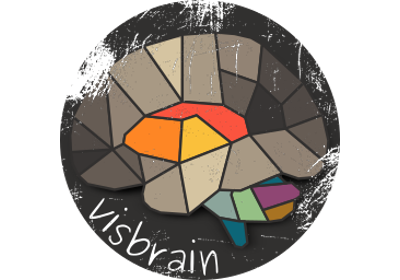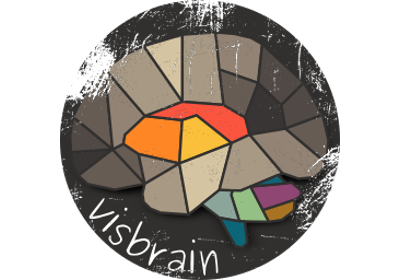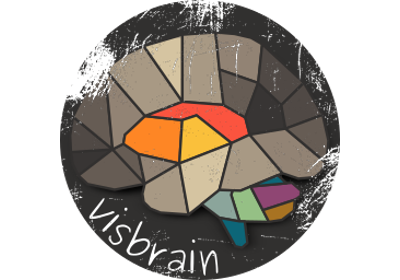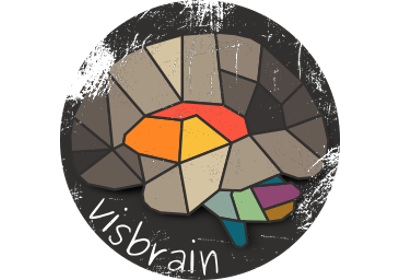visbrain.objects.ConnectObj¶
- class visbrain.objects.ConnectObj(name, nodes, edges, select=None, line_width=3.0, color_by='strength', custom_colors=None, alpha=1.0, antialias=False, dynamic=None, dynamic_order=1, dynamic_orientation='ascending', cmap='viridis', clim=None, vmin=None, vmax=None, under='gray', over='red', transform=None, parent=None, verbose=None, _z=-10.0, **kw)[source][source]¶
Create a connectivity object.
- Parameters:
- namestring
The name of the connectivity object.
- nodesarray_like
Array of nodes coordinates of shape (n_nodes, 3).
- edgesarray_like | None
Array of ponderations for edges of shape (n_nodes, n_nodes).
- selectarray_like | None
Array to select edges to display. This should be an array of boolean values of shape (n_nodes, n_nodes).
- line_widthfloat | 3.
Connectivity line width.
- color_by{‘strength’, ‘count’, ‘causal’}
Coloring method:
‘strength’ : color edges according to their connection strength define by the edges input. Only the upper triangle of the connectivity array is considered.
‘count’ : color edges according to the number of connections per node. Only the upper triangle of the connectivity array is considered.
‘causal’ : color edges according to the connectivity strength but this time, the upper and lower triangles of the connectivity array in edges are considered.
- custom_colorsdict | None
Use a dictionary to colorize edges. For example, {1.2: ‘red’, 2.8: ‘green’, None: ‘black’} turn connections that have a 1.2 and 2.8 strength into red and green. All others connections are set to black.
- alphafloat | 1.
Transparency level (if dynamic is None).
- antialiasbool | False
Use smoothed lines.
- dynamictuple | None
Control the dynamic opacity. For example, if dynamic=(0, 1), strong connections will be more opaque than weaker connections.
- dynamic_orderint | 1
If 1, the dynamic transparency is linearly modulated by the connectivity. If 2, the transparency follow a x**2 curve etc.
- dynamic_orientationstr | ‘ascending’
Define the transparency behavior :
‘ascending’ : from translucent to opaque
‘center’ : from opaque to translucent and finish by opaque
‘descending’ ; from opaque to translucent
- cmapstring | ‘viridis’
Colormap to use if custom_colors is None.
- vminfloat | None
Lower threshold of the colormap if custom_colors is None.
- understring | None
Color to use for values under vmin if custom_colors is None.
- vminfloat | None
Higher threshold of the colormap if custom_colors is None.
- overstring | None
Color to use for values over vmax if custom_colors is None.
- transformVisPy.visuals.transforms | None
VisPy transformation to set to the parent node.
- parentVisPy.parent | None
Line object parent.
- verbosestring
Verbosity level.
- _zfloat | 10.
In case of (n_sources, 2) use _z to specify the elevation.
- kwdict | {}
Optional arguments are used to control the colorbar (See
ColorbarObj).
Notes
List of supported shortcuts :
s : save the figure
<delete> : reset camera
Examples
>>> import numpy as np >>> from visbrain.objects import ConnectObj >>> n_nodes = 100 >>> nodes = np.random.rand(n_nodes, 3) >>> edges = np.random.uniform(low=-10., high=10., size=(n_nodes, n_nodes)) >>> select = np.logical_and(edges >= 0, edges <= 1.) >>> c = ConnectObj('Connect', nodes, edges, select=select, cmap='inferno', >>> antialias=True) >>> c.preview(axis=True)
Methods
__init__(name, nodes, edges[, select, ...])Init.
analyse_connections([roi_obj, group_by, ...])Analyse connections.
animate([step, interval, iterations])Animate the object.
copy()Get a copy of the object.
Tree description.
get_nb_connections_per_node([sort, order])Get the number of connections per node.
preview([bgcolor, axis, xyz, show, obj, ...])Previsualize the result.
record_animation(name[, n_pic, bgcolor])Record an animated object and save as a *.gif file.
render()Render the canvas.
screenshot(saveas[, print_size, dpi, unit, ...])Take a screeshot of the scene.
set_shortcuts_to_canvas(canvas)Set shortcuts to a VisbrainCanvas.
to_dict()Return a dictionary of all colorbar args.
to_kwargs([addisminmax])Return a dictionary for input arguments.
update()Update the line.
update_from_dict(kwargs)Update attributes from a dictionary.
Examples using visbrain.objects.ConnectObj¶

Connectivity object (ConnectObj) : complete tutorial



